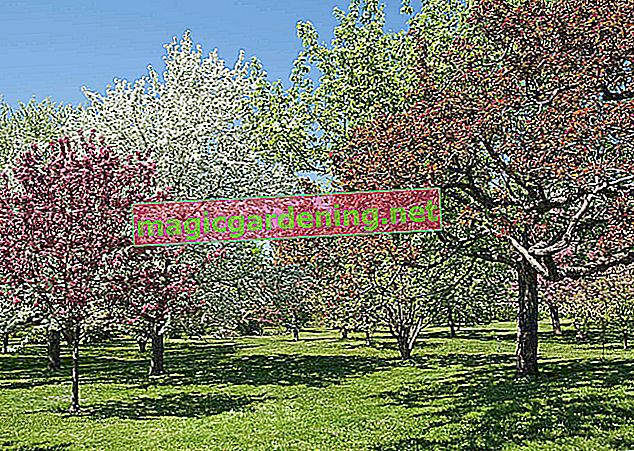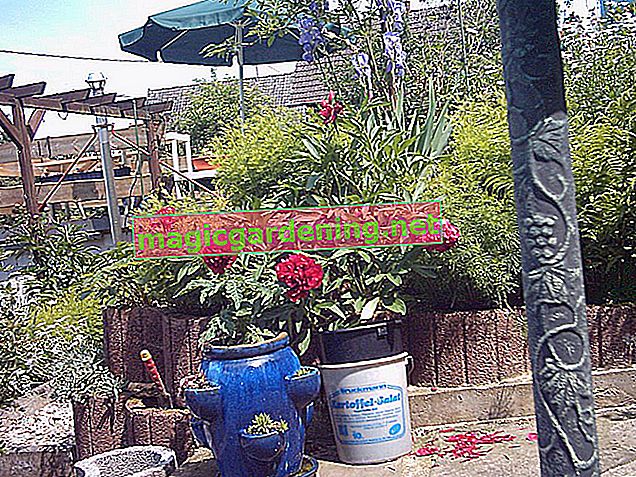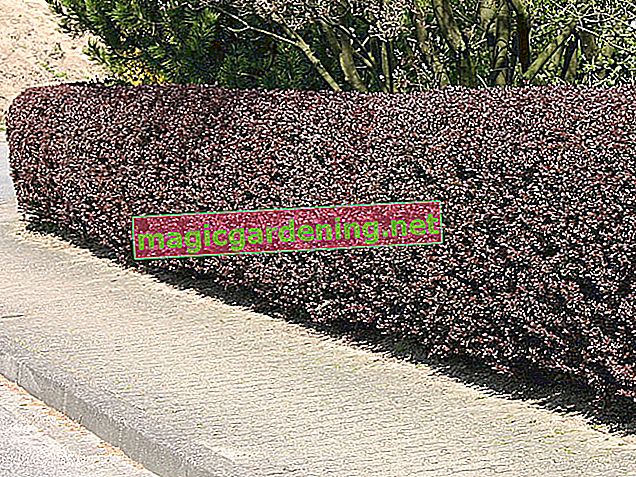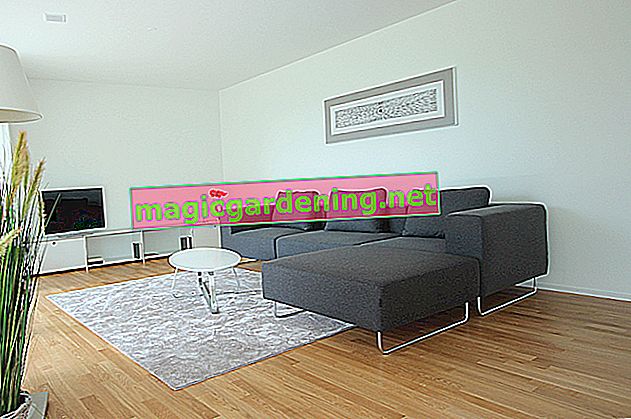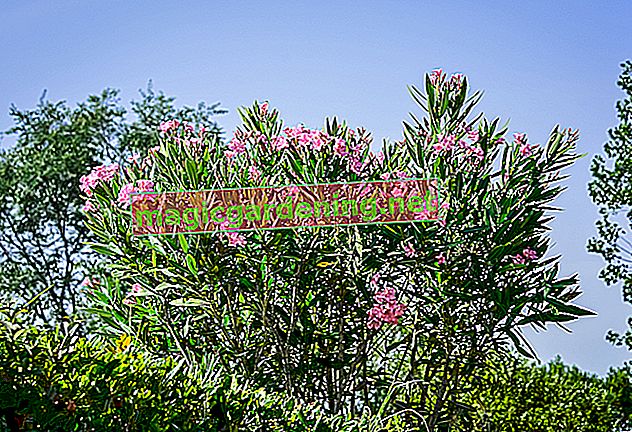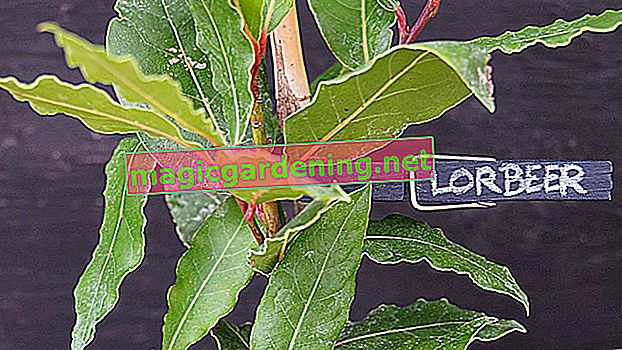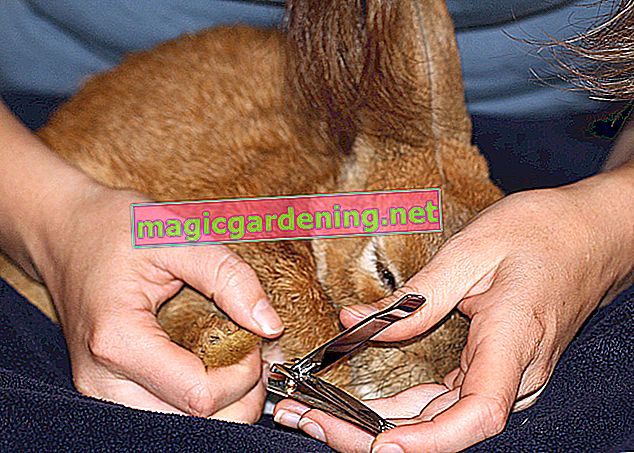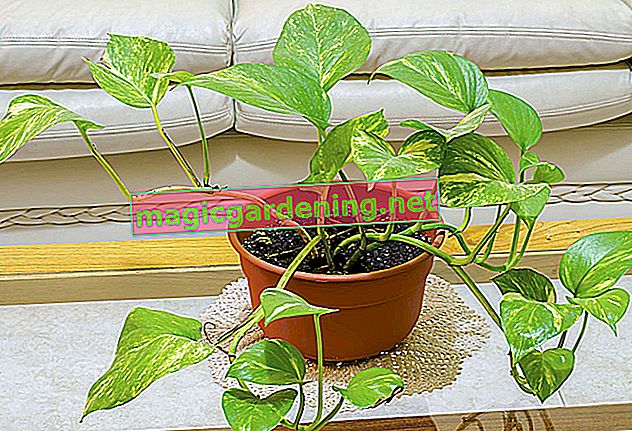
Origin and Distribution
Like so many popular houseplants, the Efeutute also belongs to the Araceae family. There are around 15 different species of the genus Efeututen, of which Epipremnum aureum and their cultivated forms are cultivated as indoor plants. The plant, also known as the golden tendril, originally comes from the small, South Pacific island of Moorea, but has since spread from there to numerous other subtropical and tropical regions of Asia - especially in Southeast Asia - as well as in Australia and the Pacific islands.
also read
- Caring for efeutute in hydroponics
- A good location for the efeutute
- In indoor culture, the Efeutute does not develop a flower
It is a climbing plant that often thrives on and on the huge jungle trees in the tropical rainforest under partially shaded to shady light conditions and spreads extremely quickly. The undemanding plants can also be found in inhospitable environments and colonize mossy stones, for example.
Efeututen owe their name to the outward resemblance to the common ivy (Hedera helix). However, from a botanical point of view, neither the species nor the genera are related to one another, and the ivy family also belongs to the Araliaceae family.
use
The efeutute is a popular houseplant because of its simplicity and pretty leaves. Since it is a tropical plant that needs warmth, it is not possible to cultivate it in the garden under our climatic conditions. In addition to being kept privately in the living room at home, the golden tendril is also often used as an ornamental plant in public environments - for example in public authorities, companies or medical practices.
This fact is due to the fact that the attractive plant does not need a lot of care, can cope with shady locations and is also considered to be air-purifying. Their leaves filter pollutants such as formaldehyde, benzene and others from the surrounding air. In many tropical countries, the Golden Efeutute is also found as an ornamental plant in parks and gardens, where however it tends to grow wild.
Efeututen can be used in a variety of ways for room design: the up to ten meter long tendrils can be used very apart (and if there is enough space in the apartment) for indoor greening of walls, room dividers, shelves and cupboards as well as banisters. In this way, you practically create your own little jungle within your four walls.
Appearance and stature
The Golden Efeutute is an evergreen, herbaceous climbing plant that grows up to 20 meters high with the help of aerial roots and can develop up to four centimeters thick shoot axes. With appropriate care, the plant can also become huge in pots, as some specimens cultivated in the tropical houses of botanical gardens prove. In the living room at home, however, the Efeutute usually only reaches a height of only two to three meters.
In addition to the golden tendril, there is a similar species of ivy that is also suitable for indoor cultivation: The spotted ivy (Epipremnum pictum 'Argyraeum'), however, has silvery, white-spotted foliage. However, the two species are very similar in terms of their location and maintenance requirements.
Does the Efeutute need a climbing aid?
In the trade you can often get the efeutute clinging to a moss stick, but you can also guide the long shoots of the climbing plant along pieces of furniture or banisters. Furthermore, the plant is also very suitable for a traffic light planting, where its shoots tend to be attractive and lush. Trellises are of course not necessary for hanging culture in a hanging basket. However, if the efeutute is to grow upright, it needs support - its soft shoots cannot stand on their own and then simply grow towards the ground.
leaves
Efeututen have heart-shaped, leathery and glossy leaves that become larger and more irregular in shape with age. The leaves of young plants are usually smaller than 20 centimeters, while the foliage of specimens many decades old can be up to 45 centimeters wide and 100 centimeters long. However, these so-called age sheets are very rare in a housing culture.
The alternately arranged leaves of the Efeutute can be monochrome green, but there is also a large selection of varieties with white-green, yellow-green or cream-green striped or spotted leaves with also different green basic colors.
blossoms
In their natural environment, Efeututen develop the bulb-like and rather inconspicuous flowers typical of an arum plant. In indoor cultivation, however, the plant flowers extremely rarely, because the piston flowers only appear when the efeutute has developed the perforated and up to one meter large age leaves - and this usually does not happen when kept in a pot.
Toxicity
Like so many representatives of the arum family, the Efeutute is also poisonous. Its leaves contain calcium oxalate crystals, which can irritate the skin or mucous membranes or trigger allergies if they come into contact with the skin. Therefore, you should always wear gloves during maintenance work, especially when cutting the plant - the leaking plant sap can cause damage. If children or pets consume leaves or other parts of plants, severe symptoms of poisoning are to be expected: depending on the amount consumed, dizziness, a racing heart and headaches to nausea, vomiting and diarrhea occur. In order to prevent such poisoning, place the efeutute out of the reach of children, cats or dogs - for example in a hanging basket hanging from the ceiling. (€ 14.99 at Amazon *)
Which location is suitable?
Efeututen need a lot of warmth: A permanent temperature of around 20 ° C all year round is ideal for the climbing plant, but it shouldn't get cooler than 16 ° C during the winter months. Due to their need for warmth, the plants are not suitable for gardening and can only enjoy fresh air on the balcony or terrace in warm summer.
In their natural location, the efeutute grows in the light penumbra of the large jungle trees, which is why it cannot cope with direct sunlight. It also needs a light, partially shaded place in indoor culture, where at most a few rays of sunshine hit the large leaves in the morning and / or evening. The plant also does not like drafts, which is why a place in front of an often open window is not necessarily the best choice.
However, the light requirements of the different varieties are very different: the darker green the leaves of the ivy, the more shady it can be. These variants also thrive in rooms facing north, where other indoor plants have no chance due to the lack of light. However, this does not apply to the variegated varieties, which need significantly more light and should therefore be placed in the immediate vicinity of a window. If the location is too dark, the variegation disappears and the leaves simply turn green. The Efeutute feels most comfortable in the bathroom anyway, as there is high humidity there all year round.
Continue reading
Substrate
Commercially available but high-quality compost-based compost-based soil for flowers and plants is best suited as a substrate. When buying, pay close attention to the composition of the soil, because cheap peat is often used for low-quality mixtures.
Hydroponics
The undemanding Efeutute gets along excellently with a substratum-free culture in expanded clay (€ 17.50 at Amazon *) or vermiculite granules and is therefore the perfect candidate for hydroponics. By the way, the Efeutute is an insider tip for experienced freshwater aquarists who help keep the water in the aquarium clean. You can also use the Efeutute - but without soil! - cultivate directly in the aquarium, with only the roots standing or hanging in the water if possible. Alternatively, plant the ivy in a pot with multiple holes in the bottom and filled with expanded clay and hang it in the basin so that only the bottom of the pot is in the water.
Continue reading
Planting and repotting
Planting and repotting the ivy is completely straightforward. The plant always needs a new pot and fresh substrate when the roots threaten to grow out of the drain holes in the bottom of the pot. However, the new container should be only slightly larger than the old one at around two to three centimeters. When planting, you can cut back dried or rotten roots and limit the growth of large plants by cutting back both the roots and the above-ground parts of the plant. As a rule, repotting should be done every two to three years.
Pour Efeutute
When it comes to water requirements, the Efeutute is quite frugal: They have no problem with occasional drought, which is why they also thrive if you occasionally forget to water. Always keep the plant slightly damp, not wet, because waterlogging is not tolerated! You can immediately pour off any standing water, for example from the planter or saucer. Instead of keeping the substrate permanently moist, you can also water less and instead spray the plant regularly or rinse off in the bathtub with lukewarm water. This increases the humidity - which the Efeutute needs anyway as a rainforest plant - and prevents an infestation with spider mites.
The Efeutute is dripping, what is it all about?
Sometimes efeututes form drops that are reminiscent of dew or raindrops - and that without it raining or you have just sprayed the plant? If this phenomenon occurs, you have watered the plant too much and it is now trying to get rid of the excess through the leaves. Carefully wipe the drops off with a cloth and then throw it away: The leaked water is poisonous and should not be touched!
Fertilize efeutute properly
The Efeutute is also undemanding when it comes to the supply of nutrients: If you forget to fertilize for a while, it won't harm it. However, the houseplant thrives best if you give it a liquid fertilizer for ornamental foliage plants with the irrigation water every two to four weeks between April and October. This is also sold under the name “green plant fertilizer” or “leaf plant fertilizer” in gardening or hardware stores. In winter you stop fertilizing and water the efeutute less.
Continue reading
Cut efeutute properly
In order to limit the size of the very vigorous plant, you can cut excessively long shoots to the desired length at any time. However, because of the poisonous sap, you should wear gloves. The pruning also has the advantage that the plant branches out better and grows more densely.
Continue reading
Increase the Efeutute
Efeututen can easily be propagated by head or trunk cuttings as well as by lowering devices. Simply place the cuttings that arise when pruning oversized shoots in a water glass for rooting. There should always be a knot directly in the water, because this is where the roots of the ivy develop. As soon as the roots are about two centimeters long, you can put the plant in a pot with soil. So that the plant is nice and bushy, it is best to plant several cuttings in a planter - after all, ivy tods do not develop side shoots. Alternatively, you can also use sinkers that are only separated from the mother plant after the roots have formed. On the other hand, shoot pieces with aerial roots should be placed in a pot with soil, as the rooting then takes place faster.
Continue reading
Diseases and pests
In general, the Efeutute is a very robust houseplant that is neither susceptible to pathogens nor to pests. Still, problems can sometimes arise, but these are usually the result of poor maintenance. As soon as these are corrected and remedied, the symptoms of the disease also disappear.
- Efeutute sheds leaves: location either too dark or substrate too wet, change location and repot the plant in fresh substrate
- Root rot, moldy soil in the pot: the plant is too wet, move the plant to fresh substrate and a new pot and water less
- withered or blotchy leaves: the location is too drafty, move the plant to another place
- Efeutute gets yellow / yellow spotted leaves: often a sign of spider mite infestation, shower the plant in the shower and increase the humidity at the location
Tips
Since the effluent filters out many harmful substances from the air, the plant improves the indoor air. However, it also stores these pollutants in its leaves, which is why you should never throw clippings or whole plants on the compost. Always dispose of all plant parts in the household waste.
Species and varieties
The Efeutute is nicknamed “golden tendril” for a reason: its beautiful apple-green, heart-shaped leaves have a yellowish to golden variegation, which can vary greatly from person to person and is strongly dependent on the light conditions available at the location. 'Golden Queen' develops a wonderfully large, golden yellow variegation, while the variety 'Marble Queen' has attractive white-green variegated leaves. 'N-Joy' also has leaves with a high proportion of white. 'Wilcoxii', on the other hand, has a distinctive yellow leaf pattern.
But be careful: The expression of the different colors varies greatly, even in the same plant, depending on how bright it is in its location. If the ivy is too dark, the leaves lose their color and turn green. They stay that way, even if you move the plant to a lighter spot.
 Hanging plant Efeutute 13.68 EUR Buy
Hanging plant Efeutute 13.68 EUR Buy  at baldur Efeutute on moss stick 15.65 EUR Buy
at baldur Efeutute on moss stick 15.65 EUR Buy  at baldur Efeutute on moss stick approx. 100-120 cm high 45.09 EUR Buy at baldur
at baldur Efeutute on moss stick approx. 100-120 cm high 45.09 EUR Buy at baldur

